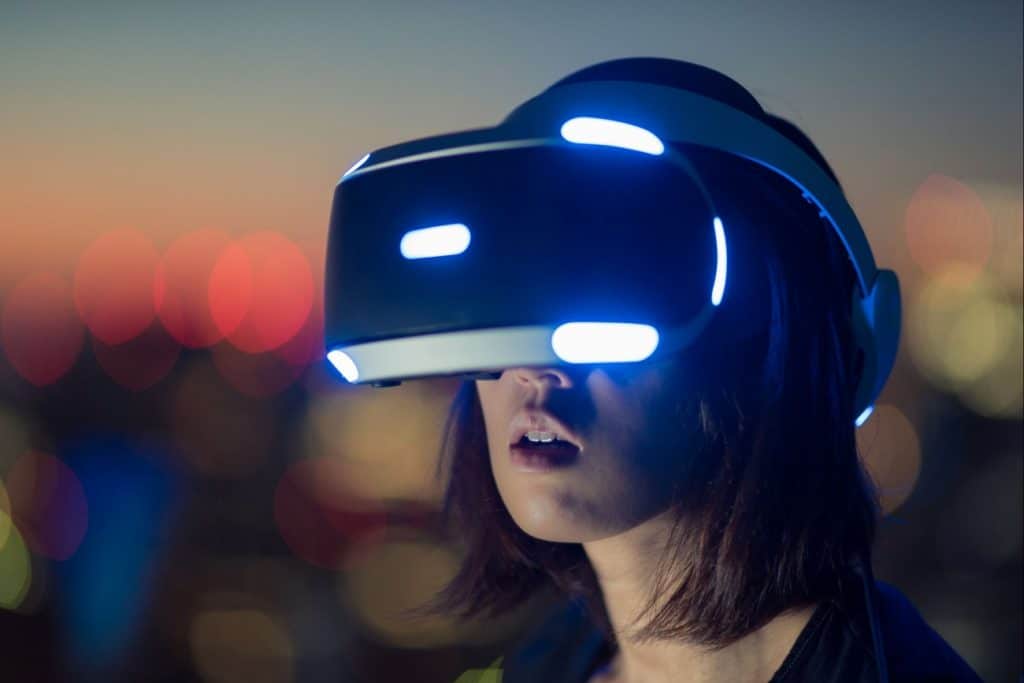Virtual Reality (VR) has become the new trend in the field of technology. Having originally been thought of as something that could only exist in the realms of sci-fi, virtual reality has grown exponentially in the last ten years, with the introduction of traditional virtual headsets such as Facebook’s Oculus or Google’s Vibe being felt mainly in the world of gaming. But VR isn’t only useful for gaming. The benefits that it offers can help in many other fields, especially in today’s topic – mental health.
Virtual Reality had already earned itself a place in the realm of virtual training and is used by many militaries with the purpose of training their soldiers, with the more well-known one being flight simulations. However, with the rise and advancement of VR, a lot of people are now putting their eyes on what it can offer for the medical field.
The increase of interest for VR and mental health also comes at a time where people have become more accustomed to addressing such issues, whereas before, you would be judged and looked down on upon admitting to suffering from anxiety or depression. Now, more efforts are being made towards giving patients the care they deserve, but there are still a lot of improvements that need to be done.

The basis for the use of Virtual Reality to treat mental health problems comes from the idea of Exposure Therapy – a type of treatment where a psychologist makes their patients face their fears by simulating a stressful situation. This kind of treatment usually has patients having to go out and experience the conditions they are afraid of, all while being guided by their psychologist.
Using VR to help improve patient’s mental health offers a great benefit for patients that have to undergo Exposure Therapy. VR headsets can recreate fully three-dimensional scenarios, thus allowing patients and psychologists to test out the treatment without having to worry about actually going out to hold the simulation. It’ll also be cheaper on patients as most insurance companies have trouble covering exposure therapy.
With that in mind, a lot of efforts are already being made to test out the VR’s reach into mental health therapy. Duke University, for example, is offering patients suffering from anxiety, thunderstorms and fear of heights treatment in virtually generated simulation rooms. In addition, the University of Southern California Institute for Creative Technologies began using a virtual reality head display to create military and war-like scenarios to help patients who are suffering from PTSD (Post Traumatic Stress Disorder).

This processes, while helpful, isn’t exactly cheap, which can limit the number of patients who are treated. That’s where Limbix, a new Silicon Valley start-up, comes in. Limbix began offering a service that utilises Google’s Dream View technology, allowing psychologists to simulate by mounting smartphones onto Google’s own VR headset, which is considerably cheaper than the ones used in other experiments. The simulated scenarios are created with Google’s Street View, which contains a vast array of panoramic photos that delivers locations from around the world.
With this technology, doctors have given patients the chance to run simulations through the headset, such as driving in a car, going to the top of a virtual skyscraper and even simulate a bar to help patients suffering from alcohol addiction. It’s not just easy to use either, it’s also affordable and available for anyone that needs it.

Unfortunately, not everything is perfect. Even with Dream View, there are still a lot of limitations when it comes to VR therapy, chief of all being the quality of the experience itself. While the headsets give psychologists a chance to create unique and realistic scenarios, they are still just a little more than static images that are missing a lot of dynamism which one would experience in reality.
Another issue with this particular tool and with VR headset treatment, in general, is that it has been tried out mainly with patients with anxiety but it remains to be seen as to how well patients who suffering from other mental illnesses such as depression will fare.
Nonetheless, that hasn’t deterred Limbix or any other companies from putting their all into testing out how the medical field could use this technology and the benefits it can offer. Now that we are becoming more aware of mental health problems, learning to treat them in the best way possible should be the next order of business.
Photo Credits: Virtual Reality Reporter, Virtuance, Looking Glass Service





